GROWTH: DEFENSE AND TECHNOLOGY
The year 1958 saw the largest migration of Jewish scientists and engineers and their families to Central Florida to work at the newly built Martin plant, later known as Martin Marietta. Most came from the Northeast. Many were young and had left large extended families.
Within a few years, in the mid-1960s, the Naval Training Center opened in Orlando. Attracted by the strategic location and beauties of the Sunshine State, other high-tech companies followed: Westinghouse in 1981 and Siemens in 1998. The companies were to change the business landscape, creating a high-tech corridor.
In a matter of years, the University of Central of Florida became a recognized research center, attracting many collaborators and innovators. Today the area is home to aerospace and defense companies, simulation and modeling, electronics, lasers and optics. More than 150 international technology companies are now based in what was once a sleepy farming and citrus area.
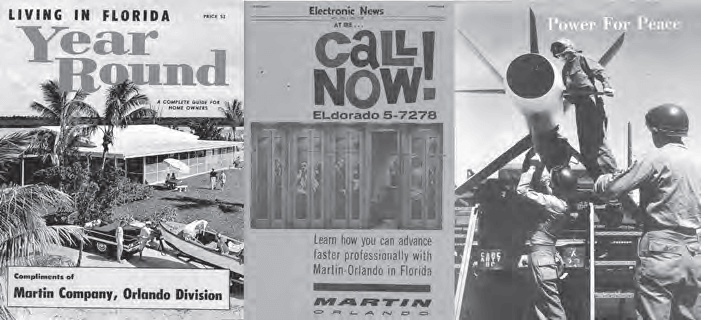 The Martin Company used these publications to attract employees: Call Now, 1959, Power for Peace, 1960, Living in Florida Year Round, 1962.
The Martin Company used these publications to attract employees: Call Now, 1959, Power for Peace, 1960, Living in Florida Year Round, 1962.
To staff their plant, the Martin Company launched a nationwide search for engineers and scientists, attracting young talented and innovative experts, willing to relocate to the little known town of Orlando. Many Jewish families moved to Central Florida including the Starks, Arnowitzs and Titens. A stream of Martin Company and Naval Training Center scientists and engineers soon followed into the 1960s and early 1970s. Some of the families noted for their technical achievements and their devotion to the budding Central Florida Jewish Community are those of Howard Pinsky, Max Amon, Martin Coensen, Milton Fisher and Harold Rosenblum.
Retired Employees Association of Lockheed Martin of Central Florida (REALM) Memorabilia Files
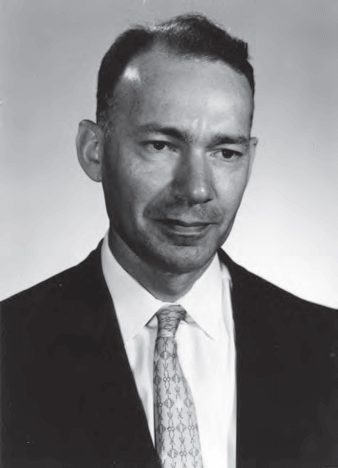 In 1974, SidneyStark was named vice president and general manager of the Orlando Division of Martin, 1960.
In 1974, SidneyStark was named vice president and general manager of the Orlando Division of Martin, 1960.
During WWII, Stark worked with Charles Lindbergh on airplane design and later was selected as one of a group of engineers to review German missile documents. Stark was key to winning business for Martin Orlando. In 1956, he became chief engineer for the newly formed Orlando Division. He led the Bullpup, Lacrosse, Pershing and Sprint programs. In 1974, he was awarded the US Army’s Outstanding Civilian Service Award. Stark was head of Martin Orlando until 1976, guiding the division out of a deep recession, helping to secure contracts to develop Patriot missiles that were later deployed to intercept Scud missile attacks in Israel.
Collections of the Jewish Museum of Florida-FIU, originated by Marcia Jo Zerivitz, LHD, Founding Executive Director
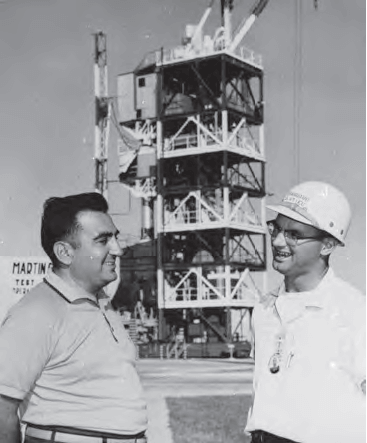 Leonard Arnowitz (left), chief engineer of the Vanguard rocket project for Martin, c. 1960.
Leonard Arnowitz (left), chief engineer of the Vanguard rocket project for Martin, c. 1960.
When he became chief engineer of the Vanguard rocket project in 1958, Arnowitz moved his family to Central Florida. Arnowitz and a handful of other Jewish residents built the first synagogue at the Space Coast for 103 families, and he later served as president. Congregation board meetings often took place during lunch at the testing facility. Despite the difficulties buying kosher meat, which had to be sent by bus from Miami, the Arnowitz family kept a kosher home. In 1962, Arnowitz moved to Orlando to work on the Pershing missile under Sidney Stark. He published extensively and held several patents.
Collections of the Jewish Museum of Florida-FIU, originated by Marcia Jo Zerivitz, LHD, Founding Executive Director
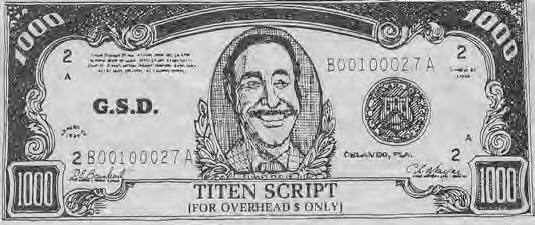
Harvey Titen created Titen “Script” as a budget incentive for his Pershing missile projects at Martin, c. 1970.
Titen, program director for the Pershing and Pershing 1A missiles, dealt with one of the biggest challenges for any project—staying within the budget. Cost overruns were common during execution of development programs due to unanticipated problems. When the army attempted to cut costs, Titen devised his scrip to reward project teams that performed well. Those teams holding accumulated scrip became eligible for more project funding should it be necessary.
Retired Employees Association of Lockheed Martin of Central Florida
(REALM) Memorabilia Files.
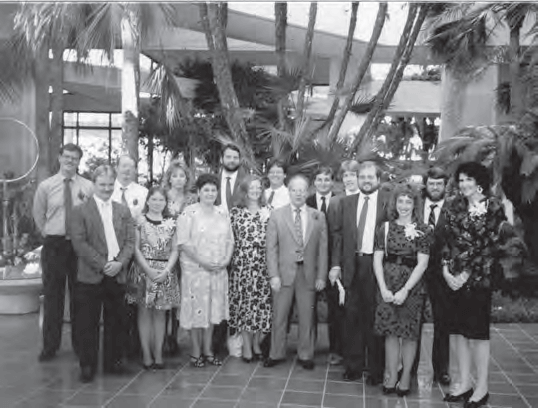
Kim (front center) and Alison (far right) Mandell Knapp had a large staff at Maynard Electronics, 1987.
In 1981, Kim and Alison Mandell Knapp started Maynard Electronics in their Lake Mary home. Because personal computers were inherently unreliable, the Knapps saw a business opportunity making products for IBM PCs. Maynard Electronics produced the first IBM compatible hard drive system, expansion cards, CPU accelerators and the first multi threading tape backup, improving backup time over competitive products. Located in Casselberry, Maynard Electronics employed 100-plus high tech and skilled personnel. Later sold and then merged, Maynard Electronics still operates out of offices in Lake Mary and is currently a division of Symantec Corporation.
Alison Mandell Knapp
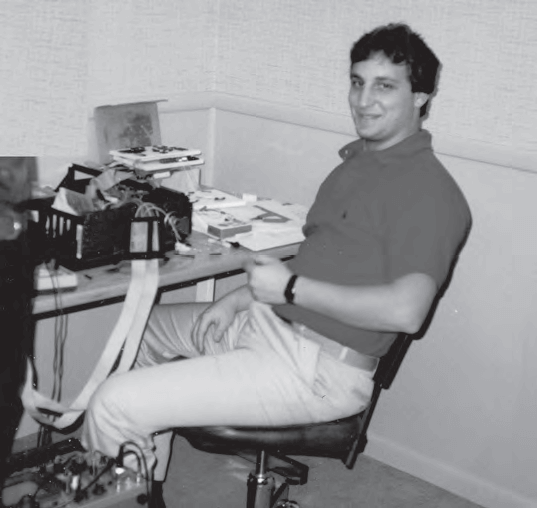
David Krinker on the Job at Maynard Electronics, 1984.
David Krinker joined Maynard Electronics as a principle designer and business strategist. Krinker and the Knapps still collaborate on various business ventures, the latest of which is the software company CasaTunes. Krinker and his family also have put their business and creative talents to work benefiting the Jewish Federation, the Jewish Academy of Orlando, Israel bonds and the Jewish Community Center (JCC).
Alison Mandell Knapp
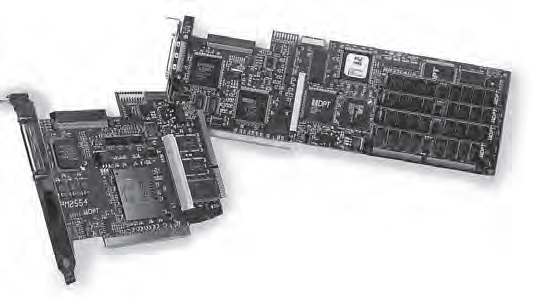
DPT invented the PM2554 Caching and PM3754112 RAID (Redundant Array of Inexpensive Disks) Disk Controllers, 1998.
With the invention of high performance intelligent storage controllers, DPT revolutionized business computing worldwide. These products are the highly effective link between the computer processor and an assortment of storage devices serving to increase the performance of multiple forms of data-storage media. Previous products had limited processing speed and the inherent risk of data loss. SmartCache was the first processor controller specifically designed to adapt to a variety of computer operating systems.
Steve Goldman
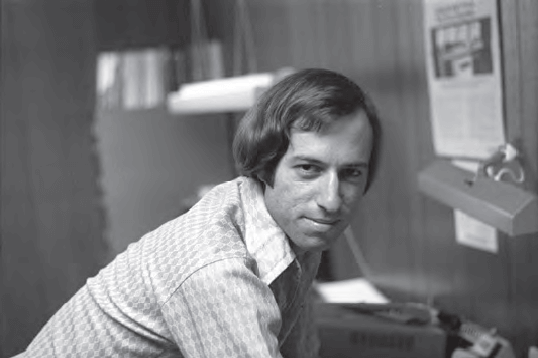
In Maitland in 1977, Steve Goldman founded Distributed Processing Technology (DPT), the first company to develop and manufacture storage controllers for the computer industry.
Goldman is a world-recognized expert and pioneer in computer storage technology. In the 1980s, he helped create computer interface standards for the American National Standards Institute (ANSI). DPT created more than 300 highly skilled and professional jobs in Orlando. The E Flag award recognizes America’s exporters and was presented by the US Department of Commerce to DPT. Goldman served as interim CEO of the Orlando Science Center and created “Wired Science,” a STEM program used to teach through sound, graphics, animation and video. His web-based animated math and physics learning project, “Why U,” attracts tens of thousands of global subscribers.
Steve Goldman
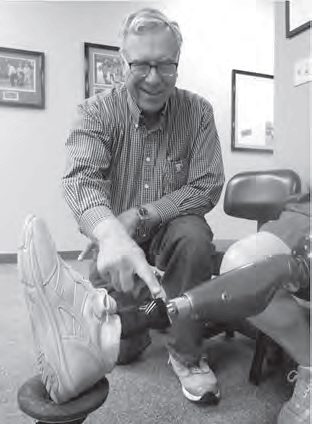 Dr. Les Kramer developed prosthetic foot and socket technologies, 2016.
Dr. Les Kramer developed prosthetic foot and socket technologies, 2016.
Dr. Kramer had a 45-year career with Westinghouse (Siemens), Lockheed Martin and various independent contractors for which he directed advanced materials research, bringing thousands of high-tech jobs to Central Florida. He is credited with 70 publications and 15 patents. Kramer also developed advanced materials concepts for prosthetics including prosthetic foot and socket technologies. Two of the 2013 Boston Marathon bombing victims were able to walk again using artificial feet manufactured by his company TaiLore Made. Kramer’s Lake Mary-based enterprises design and distribute the prosthetics.
Les Kramer
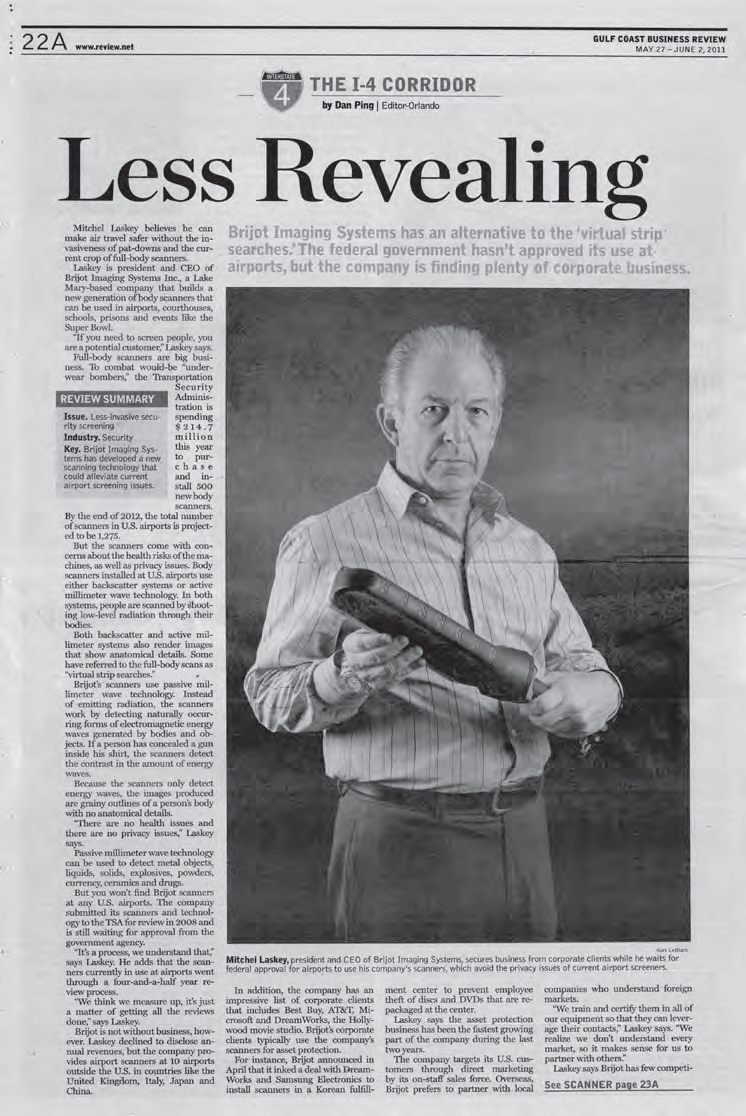
Mitchell Laskey is holding a BIS (Brijot Imaging Systems) Concealed Weapons Detection Camera, 2011
Laskey relocated his software-based healthcare company Dynamic Control Corporation (DCC) to Central Florida in 1982 to hire workers with technical skills. This resulted in 400 new jobs in Lake Mary. As CEO of BIS, he testified before Congress on the use of advanced technology for various Homeland Security initiatives including passenger screening for airports. He was the driving force behind the Florida Angel Nexus (FAN) Fund, focusing on high growth potential technology and life science companies in Florida. Laskey was president of the JCC of Greater Orlando for three years.
Gulf Coast Business Review
